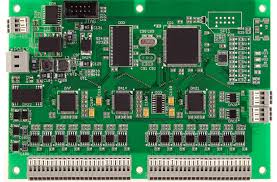Exceptional Flexibility
One of the biggest unique selling points in flex PCBs is their flexibility. This enables them to be flexed, folded, or twisted so they can be installed in areas where standard rigid PCBs fall short. This capability is very beneficial in today's electronics, for example wearable technology where the circuit must follow the device. The capacity for flexing can also go a long way to minimize the overall dimensions and weight of the product – even more importantly in sectors like aerospace or consumer electronics, where both are critical.
Enhanced Reliability and Durability
These applications require a degree of superior wear resistance and longer cycle life that can only be provided by flex PCBs. Because of their flexibility, they enable to bend without compromising the circuit connectivity making them less prone to frequent mechanical stresses caused failure in rigid PCBs. One attribute of a flex PCB is that it can be bent as many as 200,000 times without fracture. The result is a tougher board that allows for repeated flexing without damage, making it perfect for an application whose life relies on freedom of movement, such as in automotive dashboards or portable consumer devices.
Enhanced Heat Dissipation
Majority of flex PCBs Heat Dissipation Possibilities Flex PCBs, with a typical thickness value that is generally thinner than they are rigid, will benefit from this point — heat can dissipate more freely clearly –. For high-performance electronics, this becomes very important as overheating could cause failure of components. Flex PCBs improve thermal management to support longevity in the service life of electronic devices.

Save on Assembly Time and Costs
Just like other PCBs, flex boards help keep the assembly process of electronic devices under control. Manufacturers can minimize the complexity and number of interconnects by combining multiple rigid boards into a single flex circuit. This decrease assists in reducing the unit count and simplifying the design, thereby cutting assembly costs and time. The use of fewer interconnects also increases the confidence in the reliability of the electronic assembly by having less points for failure.
High Density Applications
The low profile nature of Flex PCB can be beneficial to the high component density positioning. This means the design of SMT circuit boards can have its electronic components be densely packed on either side, resulting in more functionality within a smaller space. This is especially useful in applications such as smart phones and tablets where space saving are paramount, but the device functionality cannot be projected.
Customization and Integration
Flexibility in design also includes the possibility of customization. Most people use flex PCBs so that they have a PCB at an odd-footprint (shape/size/configuration) in their electronic device. This customization allows for maximum fit of the PCB into the final product design, improving both aesthetics and function.
Conclusion
Flex PCBs clearly have quite some advantages with their unrivaled flexibility, enhanced reliability, better thermal management, reduced costs of assembly and high-density compatibility but notice they offer a wide array of options to customize your board. With advantages like these, it is no wonder that they have quickly become so prevalent in a wide range of industries and are continuing to transform the way electronic design and function.